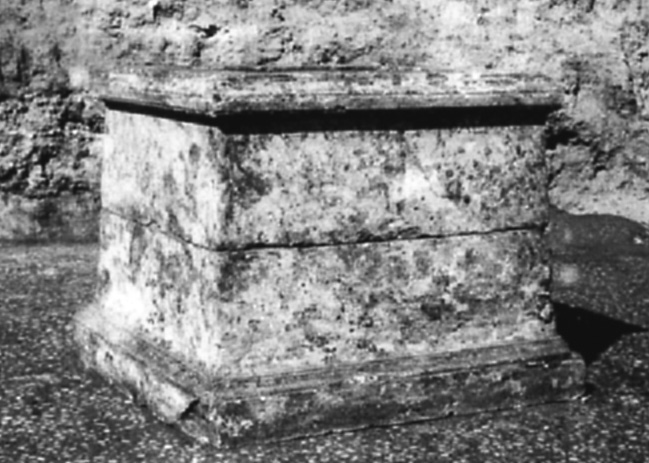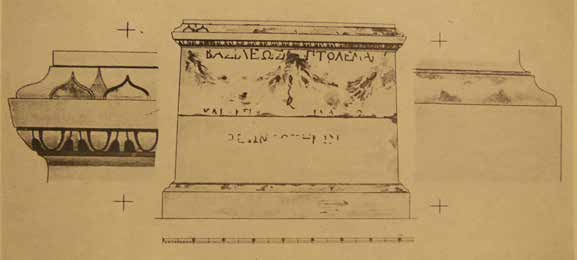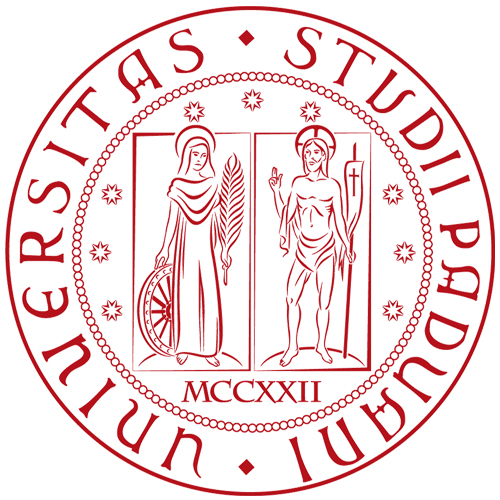Text constituted from: Breccia 1911 (I.Musée d'Alexandrie), no. 6.
Other editions: Schreiber 1903, p. 251-252; OGIS II 725; SB V 8921; Strack 1906, p. 126, no. 1; Grimm 1983, p. 71 (SEG XXXIV 1351); I.Alex.Ptol. 8; CPI I 34.
See also: on the altar, Yavis 1949, 203; Burr Thompson 1973, p. 70; Fraser 1972, II, p. 385-386, n. 367; Grimm 1983, p. 70-73; McKenzie et al. 2004, p. 84; Pfeiffer 2008, 400; Sabottka 2008, 57-64; Caneva 2013, p. 295-197; Caneva 2014a, p. 105-106, no. 2; Caneva 2014a, p. 147-148, 156.
For a possible date c. 260-246 BC, Caneva - Bricault 2019, 8-9; Caneva 2020c, p. 145.
Images: I.Alex.Ptol., Pl. 3, Fig. 8 (photo and drawing); Grimm 1983, Tf. VIII 2 (Fiechter's watercolour sketch).
Further bibliography: on the Rhakotis Serapeum, see in particular McKenzie et al. 2004; Sabottka 2008; Bricault 2013, 219-223.
On the cult of Sarapis under the early Ptolemies, see also Pfeiffer 2008; Caneva 2018, 97-101; Savvopoulos 2000, 77-83.
Online record: PHI; TM 6414






